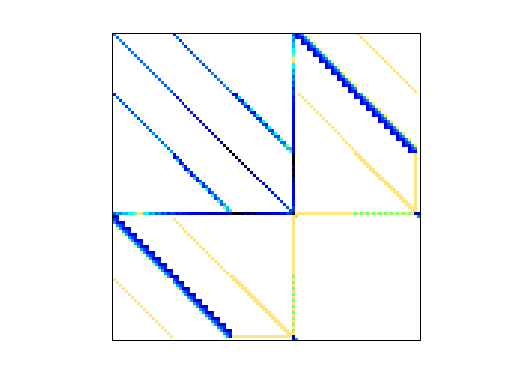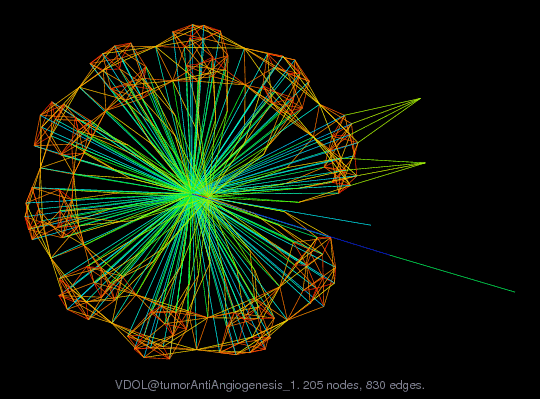VDOL/tumorAntiAngiogenesis_1
tumorAntiAngiogenesis optimal control problem (matrix 1 of 8)
| Name |
tumorAntiAngiogenesis_1 |
| Group |
VDOL |
| Matrix ID |
2748 |
|
Num Rows
|
205 |
|
Num Cols
|
205 |
|
Nonzeros
|
1,783 |
|
Pattern Entries
|
1,783 |
|
Kind
|
Optimal Control Problem |
|
Symmetric
|
Yes |
|
Date
|
2015 |
|
Author
|
B. Senses, A. Rao |
|
Editor
|
T. Davis |
| Structural Rank |
205 |
| Structural Rank Full |
true |
|
Num Dmperm Blocks
|
1 |
|
Strongly Connect Components
|
1 |
|
Num Explicit Zeros
|
0 |
|
Pattern Symmetry
|
100% |
|
Numeric Symmetry
|
100% |
|
Cholesky Candidate
|
no |
|
Positive Definite
|
no |
|
Type
|
real |
| Download |
MATLAB
Rutherford Boeing
Matrix Market
|
| Notes |
Optimal control problem, Vehicle Dynamics & Optimization Lab, UF
Anil Rao and Begum Senses, University of Florida
http://vdol.mae.ufl.edu
This matrix arises from an optimal control problem described below.
Each optimal control problem gives rise to a sequence of matrices of
different sizes when they are being solved inside GPOPS, an optimal
control solver created by Anil Rao, Begum Senses, and others at in VDOL
lab at the University of Florida. This is one of the matrices in one
of these problems. The matrix is symmetric indefinite.
Rao, Senses, and Davis have created a graph coarsening strategy
that matches pairs of nodes. The mapping is given for this matrix,
where map(i)=k means that node i in the original graph is mapped to
node k in the smaller graph. map(i)=map(j)=k means that both nodes
i and j are mapped to the same node k, and thus nodes i and j have
been merged.
This matrix consists of a set of nodes (rows/columns) and the
names of these rows/cols are given
Anil Rao, Begum Sense, and Tim Davis, 2015.
VDOL/tumorAntiogenesis
Tumor anti-angiogenesis optimal control problem is taken from
Ref.~\cite{ledzewicz2008analysis}. A tumor first uses the blood
vessels of its host but as the tumor grows oxygen that is carried by
the blood vessels of its host cannot defuse very far into the tumor.
Therefore, the tumor grows its own blood vessels by producing
vascular endothelial growth factor (VEGF). This process is called
angiogenesis. But blood vessels have a defense mechanism, called
endostatin, that tries to impede the development of new blood cells
by targeting VEGF. In addition, new pharmacological therapies that is
developed for tumor-type cancers also targets VEGF. The goal of the
tumor anti-angiogenesis problem is to determine the state and control
that minimizing the size of the tumor at the final time. The state of
the system is defined by the tumor volume, carrying capacity of a
vessel, and the total anti-angiogenic treatment administered and the
control of the system is the angiogenic dose rate. The specified
accuracy tolerance of $10^{-7}$ were satisfied after eight mesh
iterations. As the mesh refinement proceeds, the size of the KKT
matrices increases from 205 to 490.
@article{ledzewicz2008analysis,
title={Analysis of Optimal Controls for a Mathematical Model of
Tumour Anti-Angiogenesis},
author={Ledzewicz, Urszula and Sch{\"a}ttler, Heinz},
journal={Optimal Control Applications and Methods},
volume=29,
number=1,
pages={41--57},
year=2008,
publisher={Wiley Online Library}
}
|

